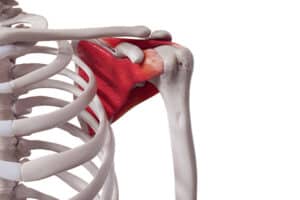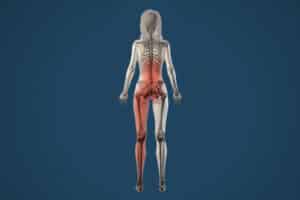Achilles tendonitis is a common condition that can significantly impact mobility and quality of life. As a physiotherapist, I understand the importance of effectively managing this condition to ensure you receive the best possible care. This blog post will explore the causes, symptoms, and treatment strategies for Achilles tendonitis, equipping you with the knowledge to better assist your patients.
What is Achilles Tendonitis?
Achilles tendonitis is an overuse injury of the Achilles tendon, the band of tissue that connects the calf muscles at the back of the lower leg to your heel bone. This condition is common among runners, athletes, and individuals who engage in activities that involve repetitive stress on the tendon.
Causes of Achilles Tendonitis
The primary causes of Achilles tendonitis include:
- Overuse: Repetitive stress from activities such as running, jumping, and other high-impact sports can cause microtears in the tendon.
- Sudden Increase in Activity: A sudden increase in the intensity or duration of physical activity can strain the Achilles tendon.
- Improper Footwear: Wearing shoes that do not provide adequate support can increase the risk of developing Achilles tendonitis.
- Biomechanical Issues: Flat feet, tight calf muscles, or improper gait patterns can contribute to excessive strain on the Achilles tendon.
- Age and Gender: As people age, the tendon becomes less flexible and more prone to injury. Males are also more susceptible to Achilles tendonitis than females.
Symptoms of Achilles Tendonitis
Common symptoms include:
- Pain: Pain and stiffness along the Achilles tendon, especially in the morning or after periods of inactivity.
- Swelling: Swelling around the tendon area, which may become more pronounced after activity.
- Tenderness: Tenderness and discomfort when touching or moving the affected area.
- Reduced Range of Motion: Difficulty and pain when flexing the foot or walking.
- Crepitus: A crackling or popping sound when moving the ankle.
Diagnosis of Achilles Tendonitis
Diagnosis typically involves a physical examination and patient history. In some cases, imaging tests like ultrasound or MRI may be used to assess the extent of tendon damage and rule out other conditions.
Physiotherapy and Managing Achilles Tendonitis
Physiotherapy plays a crucial role in the management and treatment of Achilles tendonitis, providing a multifaceted approach to healing and recovery. By combining various therapeutic techniques, physiotherapists can help patients alleviate pain, restore function, and prevent recurrence. Here’s an in-depth look at how physiotherapy aids in managing Achilles tendonitis:
1. Pain Relief and Inflammation Reduction
Modalities: Physiotherapists use a range of modalities to help reduce pain and inflammation. These may include ice therapy, ultrasound, laser therapy, shockwave therapy, and electrical stimulation. These treatments can provide immediate pain relief and reduce swelling, making the tendon more amenable to further therapeutic interventions.
2. Improving Flexibility and Mobility
Stretching Exercises: One of the primary goals in treating Achilles tendonitis is to improve the flexibility of the calf muscles and the Achilles tendon. Stretching exercises, such as calf stretches and towel stretches, are prescribed to increase the range of motion and reduce stiffness.
Manual Therapy: Techniques such as massage, myofascial release, and joint mobilizations can help improve tissue flexibility and reduce pain. Manual therapy also addresses muscle tightness and adhesions that may contribute to tendon strain.
3. Strengthening the Tendon and Surrounding Muscles
Eccentric Strengthening Exercises: Eccentric exercises, such as heel drops on a step, are particularly effective for strengthening the Achilles tendon. These exercises involve lengthening the muscle while it is under tension, which can help repair and fortify the tendon.
Progressive Resistance Training: A tailored resistance training program can help build strength in the calf muscles and the Achilles tendon. This may include exercises like seated calf raises, resistance band exercises, and plyometrics once the initial pain has subsided.
4. Education and Activity Modification
Patient Education: Educating patients about their condition is a crucial aspect of physiotherapy. Understanding the causes and contributing factors of Achilles tendonitis helps patients take an active role in their recovery and prevention strategies.
Activity Modification: Physiotherapists guide patients in modifying their activities to avoid aggravating the condition. This might include recommending low-impact exercises like swimming or cycling and advising on proper warm-up and cool-down routines.
5. Gradual Return to Activity
Rehabilitation Program: A structured rehabilitation program is essential for a safe return to activity. Physiotherapists design individualized programs that gradually increase the intensity and duration of physical activities, ensuring the tendon adapts and strengthens without being overloaded.
Monitoring and Adjustments: Continuous monitoring of the patient’s progress allows for adjustments to the rehabilitation program as needed. This ensures that the patient progresses safely and effectively through different stages of recovery.
Preventing Achilles Tendonitis
Prevention is key in managing Achilles tendonitis. Encourage patients to:
- Warm-Up and Cool Down: Properly warm up before and cool down after physical activities to prepare the muscles and tendons.
- Gradual Progression: Gradually increase the intensity and duration of physical activities to avoid sudden stress on the tendon.
- Maintain Flexibility: Regularly perform stretching exercises to maintain calf muscle flexibility.
- Use Proper Footwear: Ensure footwear provides adequate support and cushioning, especially for activities with high impact.
Recovery is Achievable
Achilles tendonitis can be a challenging condition for patients, but with appropriate management and preventative strategies, recovery is achievable. As physiotherapists, our role is to guide patients through evidence-based treatment protocols, provide education on injury prevention, and support them in returning to their desired activities safely. By staying informed and proactive, we can help our patients overcome Achilles tendonitis and maintain a healthy, active lifestyle.
For any specific cases or further questions, always feel free to consult with fellow healthcare professionals or seek specialized training. Your expertise can make a significant difference in your patients’ recovery journey.
Get Started Today!
Seeing a professional physiotherapy provider like Nova Physiotherapy can offer expert care, personalized treatment, education, and a holistic approach to Achilles tendonitis. If you’re considering physiotherapy, contact the friendly and experienced team at Nova Physiotherapy. We’re ready to help you on the road to better health.








